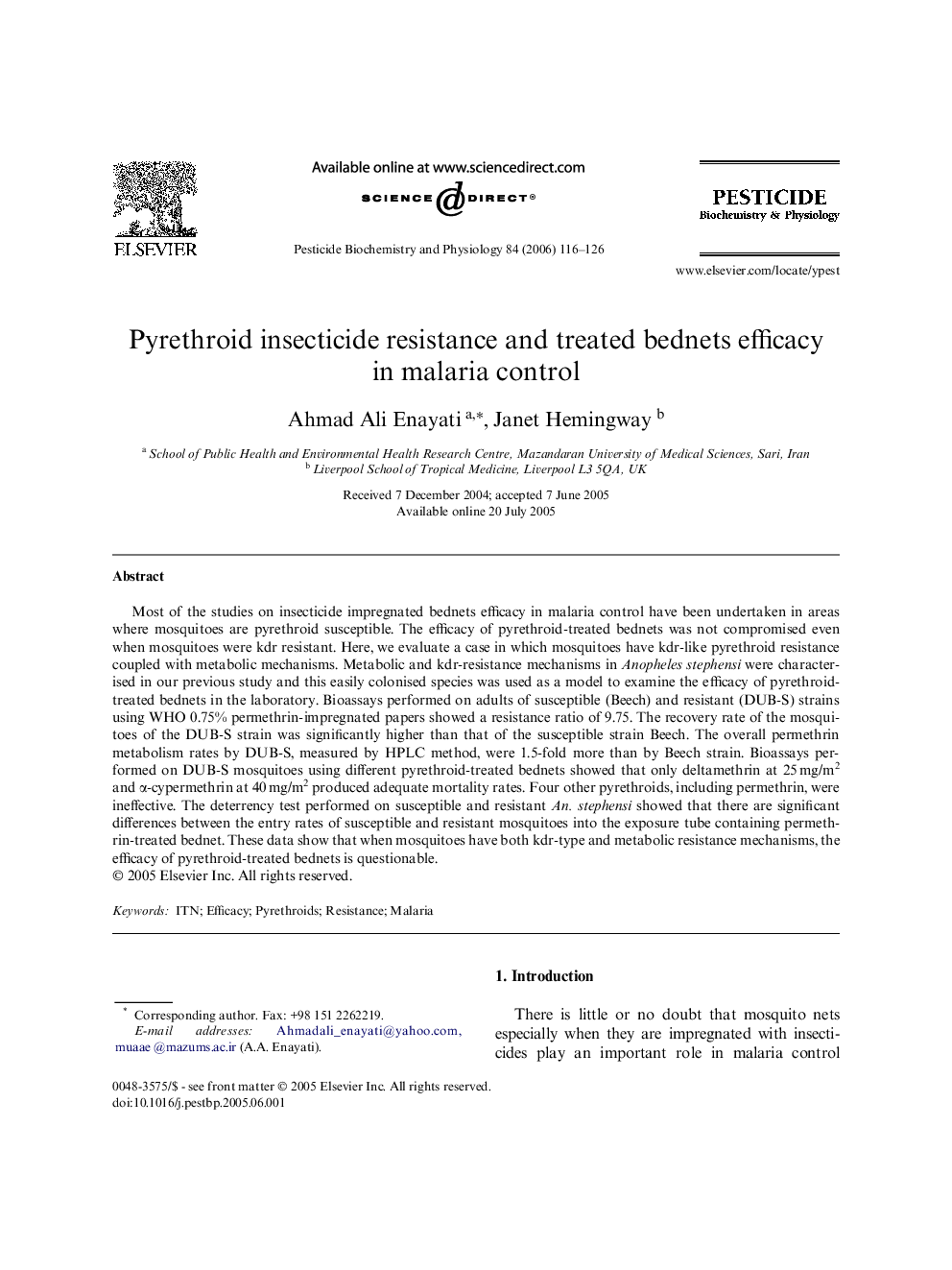| Article ID | Journal | Published Year | Pages | File Type |
|---|---|---|---|---|
| 2010348 | Pesticide Biochemistry and Physiology | 2006 | 11 Pages |
Most of the studies on insecticide impregnated bednets efficacy in malaria control have been undertaken in areas where mosquitoes are pyrethroid susceptible. The efficacy of pyrethroid-treated bednets was not compromised even when mosquitoes were kdr resistant. Here, we evaluate a case in which mosquitoes have kdr-like pyrethroid resistance coupled with metabolic mechanisms. Metabolic and kdr-resistance mechanisms in Anopheles stephensi were characterised in our previous study and this easily colonised species was used as a model to examine the efficacy of pyrethroid-treated bednets in the laboratory. Bioassays performed on adults of susceptible (Beech) and resistant (DUB-S) strains using WHO 0.75% permethrin-impregnated papers showed a resistance ratio of 9.75. The recovery rate of the mosquitoes of the DUB-S strain was significantly higher than that of the susceptible strain Beech. The overall permethrin metabolism rates by DUB-S, measured by HPLC method, were 1.5-fold more than by Beech strain. Bioassays performed on DUB-S mosquitoes using different pyrethroid-treated bednets showed that only deltamethrin at 25 mg/m2 and α-cypermethrin at 40 mg/m2 produced adequate mortality rates. Four other pyrethroids, including permethrin, were ineffective. The deterrency test performed on susceptible and resistant An. stephensi showed that there are significant differences between the entry rates of susceptible and resistant mosquitoes into the exposure tube containing permethrin-treated bednet. These data show that when mosquitoes have both kdr-type and metabolic resistance mechanisms, the efficacy of pyrethroid-treated bednets is questionable.
